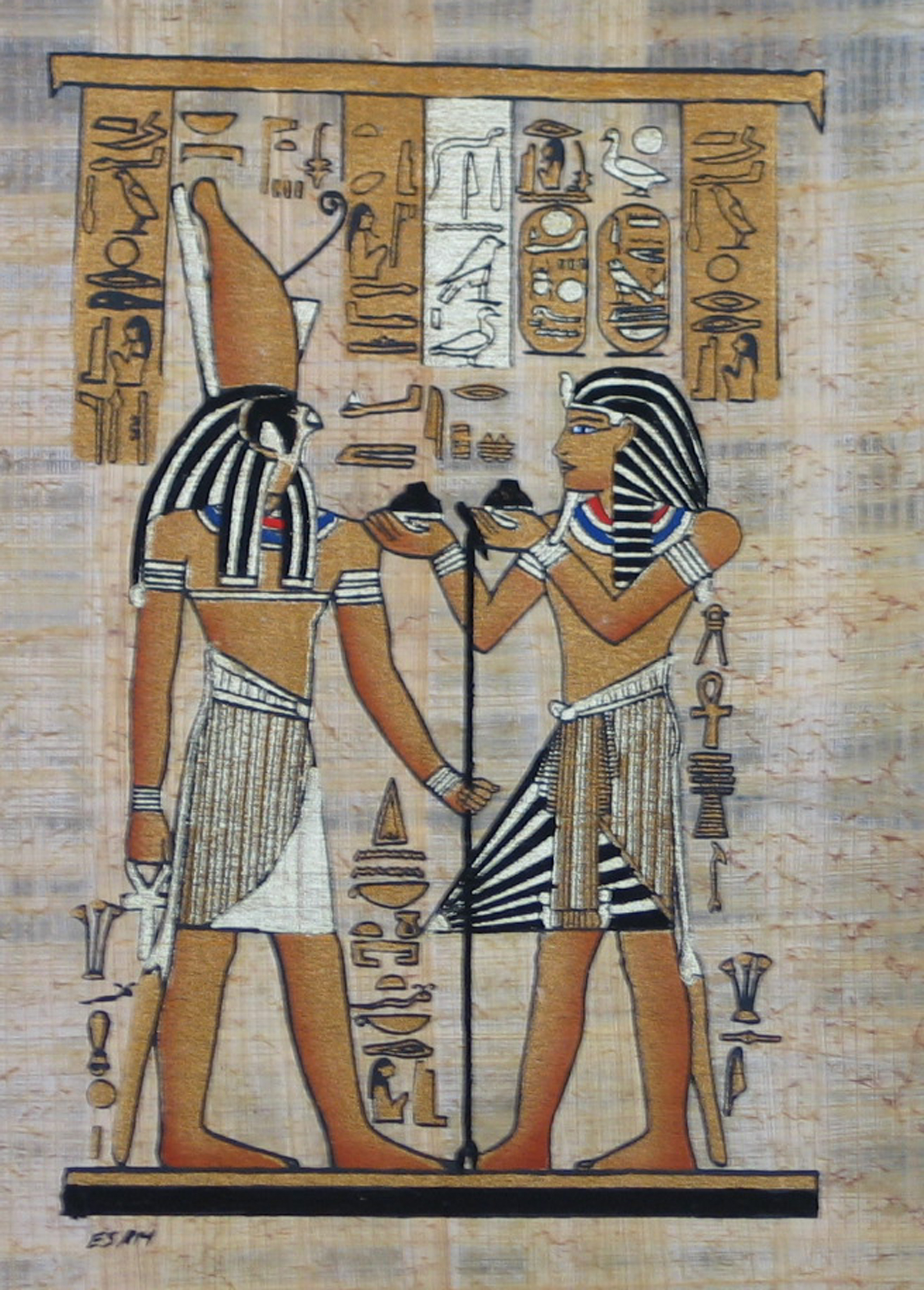A special thank you to Maria Wilson, a fellow traveler, who contributed the story of this beautiful painting done on papyrus.
On the left is the god Horus. This falcon headed god is the son of Osiris, the lord of the underworld and god of the dead. Horus is the most important god for Pharaoh because pharaoh is the living incarnation of Horus on earth. In order to show the relationship between the two, Horus, in this picture, is wearing the double crown of upper and lower Egypt.
On the right Pharaoh makes offerings to Horus. Pharaoh expects and hopes that Horus will help him maintain Maat which is good order, prosperity and justice in Egypt, the Pharaoh’s main responsibility to his people. In his hands he holds the offerings which might be either ointments or liquid offerings. The hieroglyphs above the heads of these figures are most likely spells or prayers from the Book of the Dead. They may also give us information about the deeds and or titles of this particular Pharaoh.
Horus is holding a scepter which is a sign of authority. The top is the head of a stylized gazelle; the staff is the body and the double prong at the bottom, the feet. Gazelles were common at that time in the desert areas bordering the delta . They were quite feared because they resided in the desert which, in itself, was feared by the Egyptians.
Do any of you have special stories from Egyptian antiquity?


Hi I, have become captivated with Egyptian faience jewelry,my partener has been fiering up clay beads using the ancient faience glaze,iron oxides,copper oxides and cobalt blue,they glitter and shine and the colours merge and change,each bead has a life of it’s own.We are fashioning these beads into jewelry. Enjoy your project,enjoy the colours. I look forward seeing where it takes you. My Etsy store will be up soon and called The Pharoah’s Bling